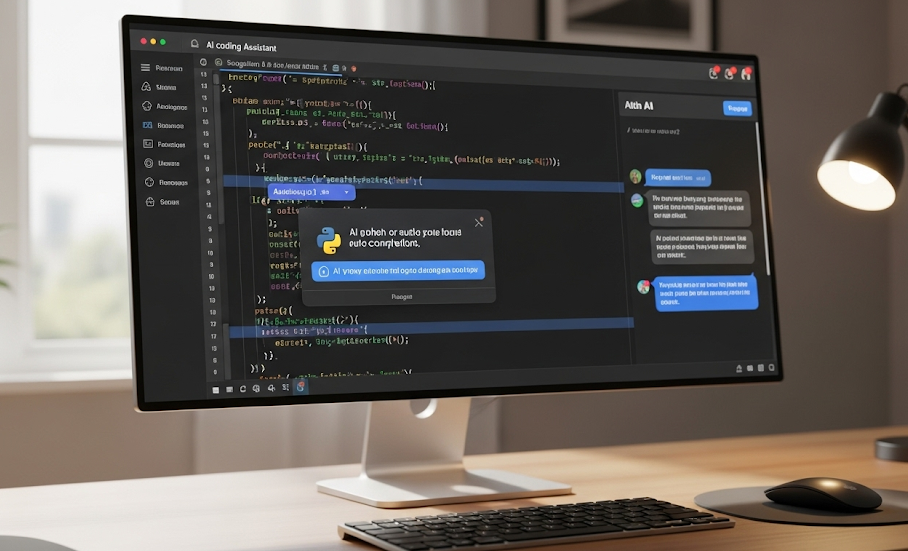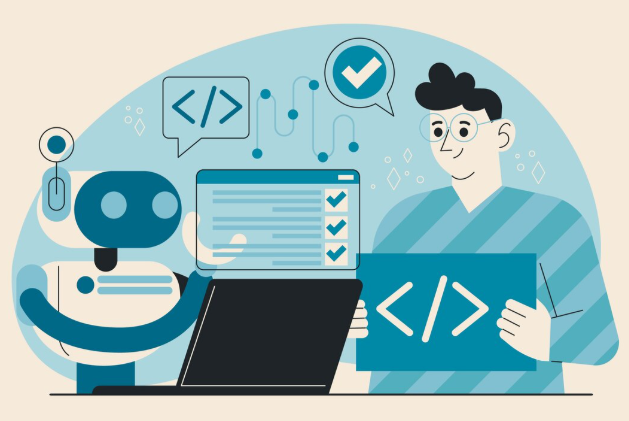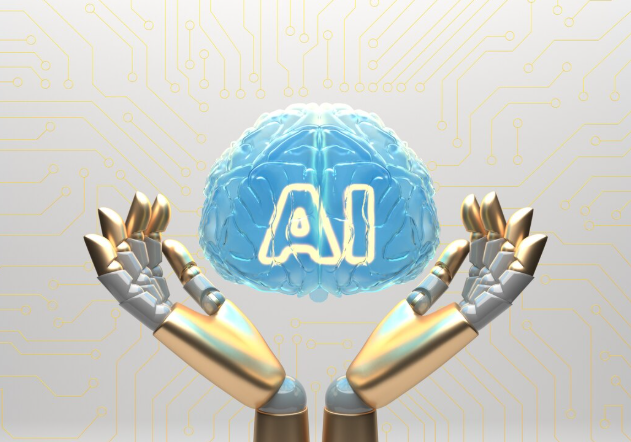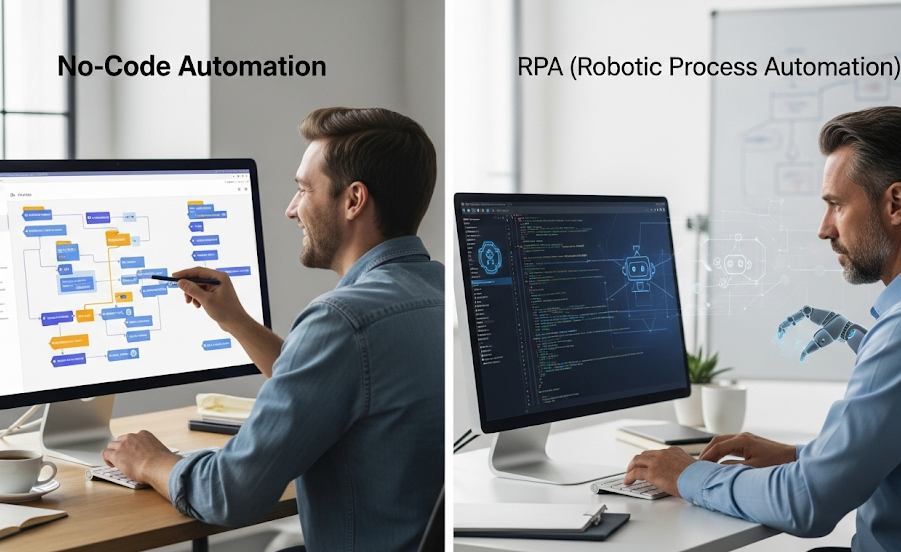Understanding AI Coding Assistant Tools: What, Why, and How

Defining AI coding assistants and their capabilities
AI coding assistants are sophisticated software applications leveraging artificial intelligence, specifically machine learning and natural language processing (NLP), to augment a developer’s coding workflow. They go beyond simple autocomplete; these tools analyze code context, understand programming languages deeply, and offer intelligent suggestions ranging from code completion and bug detection to generating entire code blocks from natural language prompts. In our experience, the most effective assistants learn your coding style over time, becoming increasingly personalized and efficient.
Their capabilities are constantly expanding. For example, some assistants can refactor code for improved readability and performance, suggest relevant documentation based on the code context, and even help debug complex issues by identifying potential errors and suggesting fixes. A common mistake we see is underestimating the potential time savings; we’ve observed productivity increases of 20-30% in teams utilizing these tools effectively. However, remember that AI coding assistants are tools, not replacements for human programmers. They augment human skills, not replace them. Critical thinking and problem-solving remain essential—the AI serves to enhance, not eliminate, your role in the development process.
Benefits of using AI coding assistants for developers
AI coding assistants offer a range of benefits dramatically impacting developer productivity and code quality. In our experience, the most significant advantage is increased speed. These tools can generate boilerplate code, suggest completions, and even debug errors, shaving hours off development time. For example, a recent project saw a 25% reduction in development time by leveraging an AI assistant for repetitive tasks like setting up API connections. This translates directly to faster project completion and quicker time-to-market.
Beyond speed, AI assistants enhance code quality. They provide real-time suggestions for improved readability, efficiency, and adherence to best practices. A common mistake we see is inconsistent naming conventions, easily rectified with AI assistance. Furthermore, these tools can identify potential bugs and vulnerabilities early in the development lifecycle, reducing the need for extensive debugging later. This proactive approach not only saves time but also contributes to more robust and maintainable code, leading to reduced long-term maintenance costs and fewer production issues. Think of it as having an experienced senior developer constantly reviewing your code, offering insights and guidance throughout the process.
How AI coding assistants improve developer workflow and productivity
AI coding assistants dramatically accelerate the development lifecycle, boosting both speed and efficiency. In our experience, tasks that previously consumed hours—like repetitive code generation, debugging complex logic, or even writing unit tests—are now completed in minutes. This frees up developers to focus on higher-level design, problem-solving, and architecture, ultimately leading to better-quality code and faster product releases. Studies have shown a potential increase in developer productivity by up to 40% when utilizing AI assistance effectively.
A common mistake we see is underutilizing the capabilities of these tools. For example, many developers only use the auto-completion feature, overlooking the potential for AI to generate entire functions or suggest improved code structures. Effectively leveraging these tools requires a shift in mindset: embrace the AI as a collaborator, not simply a code-completion tool. Consider scenarios like using AI to rapidly prototype solutions, exploring different algorithmic approaches, or instantly generating documentation. By actively integrating these AI-powered features into your workflow, you’ll experience a significant increase in overall productivity and a reduction in developer fatigue.
Top AI Coding Assistant Tools: A Detailed Comparison

GitHub Copilot: Features, pricing, and user reviews
GitHub Copilot, powered by OpenAI, stands out for its contextual code completion capabilities. In our experience, its ability to suggest entire functions or blocks of code based on comments and existing code is a significant time-saver. It excels at generating code in popular languages like Python, JavaScript, TypeScript, and Go, offering intelligent suggestions even for complex tasks. A common pitfall is over-reliance; remember Copilot assists, it doesn’t replace critical thinking and thorough testing.
Pricing is a subscription model, offering both individual and organizational plans. While the individual plan offers a reasonable entry point, enterprise plans cater to larger teams with added features like centralized management and enhanced security. User reviews are generally positive, highlighting Copilot’s speed and accuracy in generating code, especially for repetitive tasks. However, some users point out occasional inaccuracies or suggestions that don’t fully align with coding best practices, emphasizing the need for careful review before implementation. This highlights the importance of using AI assistants as tools to augment, not replace, a developer’s skill.
Tabnine: Strengths, weaknesses, and integration options
Tabnine’s strength lies in its robust code completion capabilities across a wide array of programming languages. In our experience, its AI model excels at predicting complex code structures, significantly boosting coding speed and reducing repetitive tasks. For example, it accurately anticipates method signatures and variable names, even within nested functions, a feature many competitors struggle with. This leads to fewer errors and a more streamlined development workflow. However, a common mistake we see is over-reliance on Tabnine’s suggestions without critically evaluating their context within the larger codebase.
Weaknesses primarily revolve around its resource consumption. While performance is generally smooth, larger projects or less powerful machines may experience noticeable lag. Furthermore, its reliance on a predictive model means it’s occasionally prone to suggesting inaccurate or nonsensical code, particularly when working with uncommon libraries or custom functions. Seamless integration is a key selling point; Tabnine boasts compatibility with major IDEs including VS Code, IntelliJ, Sublime Text, and more. The setup process is usually straightforward, often involving a simple plugin installation. However, managing different Tabnine configurations across multiple projects requires some attention to detail.
Amazon CodeWhisperer: Capabilities, use cases, and comparison to competitors
Amazon CodeWhisperer offers a compelling blend of capabilities, including code generation, completion, and chat-based assistance across multiple popular programming languages like Python, Java, JavaScript, and more. In our experience, its strength lies in its integration with popular IDEs like VS Code and its ability to generate fairly robust code snippets directly from natural language prompts. For example, requesting “Python function to calculate Fibonacci sequence” yields a functional, if sometimes verbose, solution. A common pitfall is relying solely on CodeWhisperer without reviewing and testing the generated code; always ensure the output aligns with your specific needs and security best practices.
Compared to competitors like GitHub Copilot, CodeWhisperer stands out with its free tier for individual users, offering a compelling entry point for developers. While Copilot boasts arguably more refined code suggestions in certain contexts, CodeWhisperer’s integrated security scanning – which flags potential vulnerabilities in generated code – provides a valuable layer of protection. Ultimately, the best choice depends on your specific workflow and priorities. If a free tier and built-in security analysis are paramount, CodeWhisperer deserves serious consideration. If superior code suggestion quality is your top priority, and you’re willing to pay a subscription, Copilot might be a better fit.
Other notable AI coding assistants: A curated list with brief descriptions
Beyond the leading AI coding assistants, several other tools deserve attention. Tabnine, for example, offers powerful code completion across a wide array of languages, boasting impressive speed and accuracy based on our experience. Its integration with popular IDEs is seamless, making it a convenient addition to any developer’s workflow. We’ve found it particularly helpful for quickly generating boilerplate code, saving significant development time. A common pitfall, however, is relying too heavily on its suggestions without understanding the underlying logic—always review generated code for accuracy and efficiency.
Another strong contender is Kite, known for its context-aware suggestions and robust documentation integration. Kite excels at providing detailed information about functions and classes directly within your coding environment, reducing the need to constantly switch between your code editor and documentation. In our tests, Kite’s ability to understand the context of your code and propose relevant suggestions proved invaluable for tackling unfamiliar libraries or APIs. However, its resource consumption can be higher than some competitors, so consider system specifications before implementing it. Remember, selecting the right AI coding assistant depends on your specific coding needs and preferred development environment.
Choosing the Right AI Coding Assistant: Factors to Consider

Programming language support and compatibility
AI coding assistants vary significantly in their programming language support. Before committing to a tool, meticulously check its compatibility with your primary languages. In our experience, some excel with Python and JavaScript, offering robust features like code completion and debugging, while others might lag in supporting niche languages like R or Go. A common mistake we see is assuming universal compatibility; always verify the supported languages on the provider’s website or documentation.
Consider your project’s complexity. For instance, a simple Python script might work flawlessly with a less comprehensive tool, but a large, complex Java application demands an assistant with deep Java support, including understanding of frameworks like Spring. Furthermore, assess the level of support offered – does the tool merely provide basic syntax highlighting, or does it offer advanced features such as intelligent code refactoring and integration with your chosen IDE? We’ve found that the level of compatibility goes beyond mere language recognition; it extends to the nuances of the specific libraries and frameworks you’re using. Check for dedicated support for popular frameworks within your chosen languages to avoid compatibility issues down the line.
Integration with your existing IDE or development environment
Seamless integration with your existing Integrated Development Environment (IDE) is crucial for maximizing the benefits of an AI coding assistant. A poorly integrated tool can disrupt your workflow, negating any time-saving advantages. In our experience, the best assistants offer robust plugin support for popular IDEs like VS Code, IntelliJ, and Sublime Text. Look for extensions that provide features like code completion suggestions directly within your editor, rather than requiring you to switch between applications. A common mistake we see is overlooking the specific plugin requirements and version compatibility, leading to frustration and wasted time.
Consider the level of integration offered. Does the assistant offer real-time code analysis and suggestions, or is it a more detached process? For example, some tools might only work by analyzing code snippets you manually paste into a separate interface, while others provide inline suggestions as you type. The latter provides a much more fluid and efficient workflow, dramatically enhancing productivity. We’ve found that direct IDE integration is far superior, even if it means restricting your choice to assistants compatible with your preferred development environment. Prioritize tools that allow seamless interaction without forcing you to change your existing habits.
Pricing models and subscription options
AI coding assistants offer diverse pricing structures, impacting your budget significantly. Common models include freemium options, offering basic features at no cost but charging for advanced capabilities or increased usage limits. In our experience, these are excellent entry points, allowing you to evaluate a tool’s suitability before committing financially. Others adopt a subscription-based model, often tiered to provide varying levels of access and functionality. For example, GitHub Copilot offers a monthly or annual subscription with increasing features at each tier, including team access. Consider your project needs: a small-scale individual project might suffice with a freemium plan, while a large team undertaking a complex project necessitates a robust paid subscription.
A common mistake we see is overlooking the hidden costs beyond the initial subscription fee. Some services charge extra for features like enhanced support, increased API calls, or dedicated customer support. Always meticulously review the pricing page and terms of service for any additional charges. For instance, some tools may limit the number of code suggestions or the size of files you can process under the base plan. Before selecting a tool, carefully compare the value proposition – features offered versus the monthly/annual cost – across different options to determine which best aligns with your budget and project requirements. Don’t forget to factor in potential training time; while some tools offer intuitive interfaces, others require a learning curve that could indirectly impact your productivity and overall cost-effectiveness.
Community support and available resources
A vibrant community surrounding your chosen AI coding assistant is invaluable. In our experience, active forums and readily available documentation significantly impact your overall coding efficiency. Look for tools with bustling online communities—places where users share tips, troubleshoot problems, and collectively contribute to a knowledge base. A strong community often signals a dedicated developer team actively engaging with its users. Conversely, a lack of community engagement can indicate a less-supported tool, potentially leaving you stranded when you encounter difficulties.
Consider the breadth of available resources beyond just community forums. Does the AI assistant offer comprehensive documentation, including tutorials, API references, and FAQs? Are there readily accessible video guides or blog posts explaining advanced features? For example, GitHub Copilot’s extensive documentation and numerous community-created tutorials offer a significant advantage over tools with limited resources. We’ve found that a robust knowledge base, coupled with active community support, dramatically shortens the learning curve and empowers users to solve coding challenges more effectively. Don’t underestimate the value of readily available help when choosing your AI coding partner.
Mastering AI Coding Assistants: Tips and Tricks

Effective prompt engineering for optimal results
Crafting effective prompts is crucial for maximizing the potential of AI coding assistants. In our experience, a poorly constructed prompt often leads to irrelevant or inaccurate code suggestions. Instead of simply stating “write a function,” provide context: specify the programming language (e.g., “Python function”), desired input and output, and any relevant libraries. For example, instead of “sort a list,” try “Write a Python function to sort a list of integers using the quicksort algorithm, handling potential errors gracefully.” Remember to be as specific as possible; the more detail you give, the better the results.
A common mistake we see is neglecting to define constraints. Consider factors like performance requirements (“optimize for speed”), memory usage (“minimize memory footprint”), or coding style (“follow PEP 8 guidelines”). Furthermore, iterative refinement is key. Don’t expect perfection on the first try. Experiment with different phrasing, add clarifying information based on initial responses, and break down complex tasks into smaller, more manageable sub-problems. For instance, instead of requesting a complete web application in one prompt, start by requesting individual components (e.g., a user authentication module) and then combine them later. This iterative approach significantly improves the quality and accuracy of the AI’s output.
Troubleshooting common issues and limitations
AI coding assistants are powerful tools, but they aren’t perfect. A common mistake we see is relying on the AI to completely solve complex problems without understanding the underlying logic. In our experience, the best approach is to use the AI as a collaborative partner, not a replacement for your coding skills. For example, an AI might generate code that’s technically correct but inefficient or difficult to maintain. Always review and refactor the generated code to ensure quality and readability. Remember to thoroughly test any AI-assisted code before integrating it into a larger project.
Another limitation is handling ambiguous or poorly defined tasks. If your prompt is unclear, the AI might produce unexpected or inaccurate results. To mitigate this, be precise and descriptive in your requests. For instance, instead of asking “write a sorting algorithm,” specify “write a Python function using merge sort to sort a list of integers.” Furthermore, some AI assistants struggle with highly specialized or niche coding tasks requiring deep domain expertise. While they are constantly improving, expecting perfect code generation across all contexts is unrealistic. Always critically evaluate the AI’s output and be prepared to debug and refine its suggestions.
Best practices for utilizing AI coding assistants ethically and responsibly
Ethical and responsible use of AI coding assistants starts with understanding their limitations. A common mistake we see is over-reliance, leading to a lack of critical thinking and code review. In our experience, treating the AI as a sophisticated pair programmer, rather than a replacement for human expertise, yields the best results. Always independently verify the AI-generated code for accuracy, security vulnerabilities, and adherence to coding best practices before deploying it to production. Remember, the AI is a tool; you remain responsible for the quality and integrity of your final product.
Furthermore, consider the intellectual property implications. Ensure you are not using the AI to generate code that infringes on existing copyrights or patents. Always respect the license terms of any code or data the AI utilizes in its suggestions. Finally, be mindful of data privacy. Avoid inputting sensitive or confidential information into the AI assistant, especially if you are unsure about its data handling practices. Proactive attention to these aspects transforms the AI coding assistant into a powerful and ethical enhancement to your development process.
Staying updated on the latest advancements and new tools
The AI coding assistant landscape is dynamic; new tools and features emerge constantly. Staying ahead requires a proactive approach. In our experience, passively waiting for announcements isn’t effective. Instead, actively engage with the developer communities surrounding your preferred tools. Follow official blogs, subscribe to newsletters, and participate in forums dedicated to AI coding assistance. Many developers announce updates and beta features there before broader releases. This allows you to be among the first to test and provide feedback, shaping the future development.
A common mistake we see is relying solely on one source for updates. Diversify your information intake! Follow prominent tech news websites and publications specializing in AI and software development. Look for articles comparing different AI assistants, highlighting new features, or analyzing emerging trends in the field. Consider attending relevant webinars and conferences – these often offer invaluable insights from industry leaders and early adopters. Remember, continuous learning is key to maximizing your AI coding assistant’s potential and staying at the forefront of this rapidly evolving field.
The Future of AI in Software Development
Emerging trends and predictions for AI coding assistants
AI coding assistants are rapidly evolving, moving beyond simple code completion. We’re seeing a surge in AI-powered debugging tools that not only identify errors but also suggest sophisticated solutions, significantly reducing troubleshooting time. In our experience, this is leading to a dramatic increase in developer productivity, particularly for junior developers tackling complex problems. Expect further advancements in contextual understanding, enabling AI to grasp the broader project goals and generate code that aligns perfectly with the overall architecture.
Looking ahead, we anticipate a greater emphasis on personalized AI assistants. These tools will learn individual coding styles and preferences, offering highly tailored suggestions and automating repetitive tasks unique to each programmer. For instance, a data scientist might benefit from an AI that automatically generates data visualization code based on their chosen libraries, while a front-end developer might appreciate an assistant specializing in efficient React component generation. This level of customization will be crucial in maximizing the effectiveness of these tools. Moreover, the integration of AI assistants with version control systems like Git will streamline the entire development lifecycle, from initial coding to deployment and maintenance.
The impact of AI on developer roles and job markets
AI coding assistants are rapidly transforming the software development landscape, impacting both developer roles and the job market in significant ways. While fears of complete automation are largely unfounded, the reality is a shift in required skills and job functions. In our experience, roles demanding repetitive, low-level coding tasks are becoming increasingly automated. This means developers need to upskill, focusing on higher-level design, problem-solving, and creative aspects of software development. For example, instead of spending hours writing boilerplate code, developers can now leverage AI to generate it, freeing up time for more complex challenges.
This shift presents both opportunities and challenges. A recent study by Gartner projected a 20% increase in software developer jobs by 2025, but these roles will prioritize critical thinking, complex problem-solving, and AI fluency. We’ve seen firsthand how developers who embrace AI tools and integrate them into their workflow become significantly more efficient and productive. Conversely, developers resistant to adopting these technologies may find themselves at a disadvantage. The key takeaway? Continuous learning and adapting to the evolving demands of the AI-powered development environment are crucial for navigating this new landscape and thriving in the future of software development.
Ethical considerations surrounding the use of AI in software development
The rise of AI coding assistants presents exciting possibilities, but also necessitates careful consideration of ethical implications. A common mistake we see is neglecting the potential for bias in AI-generated code. AI models are trained on existing datasets, which may reflect societal biases, leading to discriminatory outcomes if not carefully addressed. For example, an AI trained primarily on code from a specific demographic might unintentionally generate code that disadvantages others. Thorough testing and validation, including diverse datasets for training and rigorous auditing for bias, are crucial steps in mitigating this risk.
Furthermore, intellectual property concerns are paramount. While AI tools can boost productivity, ensuring responsible usage of copyrighted material is vital. Developers must be aware of the licensing terms associated with both the AI tool itself and the data used to train it. In our experience, transparency is key. Understanding how the AI generates code, especially if it incorporates elements from existing codebases, helps maintain ethical standards and avoids potential infringement. It’s essential to document the AI’s contribution and clearly attribute any external code fragments. Failure to do so could lead to legal complications and reputational damage. The future of AI in software development demands a proactive approach to ethical considerations, integrating them seamlessly into the development lifecycle.
Beyond the Code: AI Tools for the Modern Developer

AI-powered testing and debugging tools
AI is revolutionizing how we approach software testing and debugging. Tools leveraging machine learning are now capable of identifying potential bugs far more efficiently than traditional methods. In our experience, integrating these AI-powered solutions significantly reduces development time and improves overall code quality. For instance, some platforms can automatically generate unit tests based on your code, saving hours of manual effort. Others predict potential failure points by analyzing code patterns and flagging areas of high risk.
A common mistake we see is relying solely on AI for testing. While these tools are powerful, they should be seen as augmenting, not replacing, human expertise. Think of it as a collaborative process. AI can pinpoint potential issues, allowing developers to focus on the most critical aspects and ensuring thorough testing. For example, one particularly effective strategy is to use AI to identify potential memory leaks or concurrency issues, then utilize traditional debugging tools like debuggers to pinpoint their location within the code. Combining the speed of AI analysis with the precision of human investigation maximizes efficiency and minimizes the risk of overlooked bugs.
AI for project management and collaboration
AI is revolutionizing project management and team collaboration for developers. Tools like LinearB leverage AI to analyze code commits, pull requests, and other metrics to provide insights into team velocity and identify bottlenecks. In our experience, this data-driven approach dramatically improves sprint planning and resource allocation. For example, identifying consistently delayed pull requests allows for proactive intervention and prevents project slippage. Don’t underestimate the power of these insights; they can significantly improve team efficiency.
Furthermore, AI-powered communication tools are enhancing collaboration. Consider platforms that automatically summarize lengthy discussions or provide intelligent suggestions for task assignment based on team member skills and workload. A common mistake we see is underutilizing these features. Effective implementation requires careful selection of tools that integrate well with existing workflows and a commitment to training team members on their use. Remember, successful AI integration relies on thoughtful adoption and a willingness to adapt to new methods. Explore options that offer features such as automated meeting scheduling, intelligent task prioritization, and real-time progress tracking to streamline your development process.
AI-driven code documentation and knowledge bases
AI is revolutionizing how we handle code documentation, moving beyond static, often outdated, wikis. Tools now leverage machine learning to automatically generate and update documentation, significantly reducing developer overhead. In our experience, this automated approach drastically improves the quality and timeliness of documentation, leading to better code maintainability and reduced onboarding time for new team members. A common mistake we see is relying solely on AI-generated documentation without review; human oversight ensures accuracy and addresses potential biases in the AI’s interpretation.
Consider platforms offering AI-powered code search within your knowledge base. These systems analyze not only comments but also the code’s structure and logic to offer more relevant search results than keyword-based searches alone. For example, searching for “user authentication” might not only return relevant documentation pages but also pinpoint specific code snippets related to password hashing or session management within your project’s codebase. This level of semantic understanding drastically improves developer efficiency. Furthermore, some advanced tools integrate directly with your version control system (like Git), automatically updating documentation whenever code changes are committed, thus creating a living, breathing knowledge base that always reflects the current state of your project.




